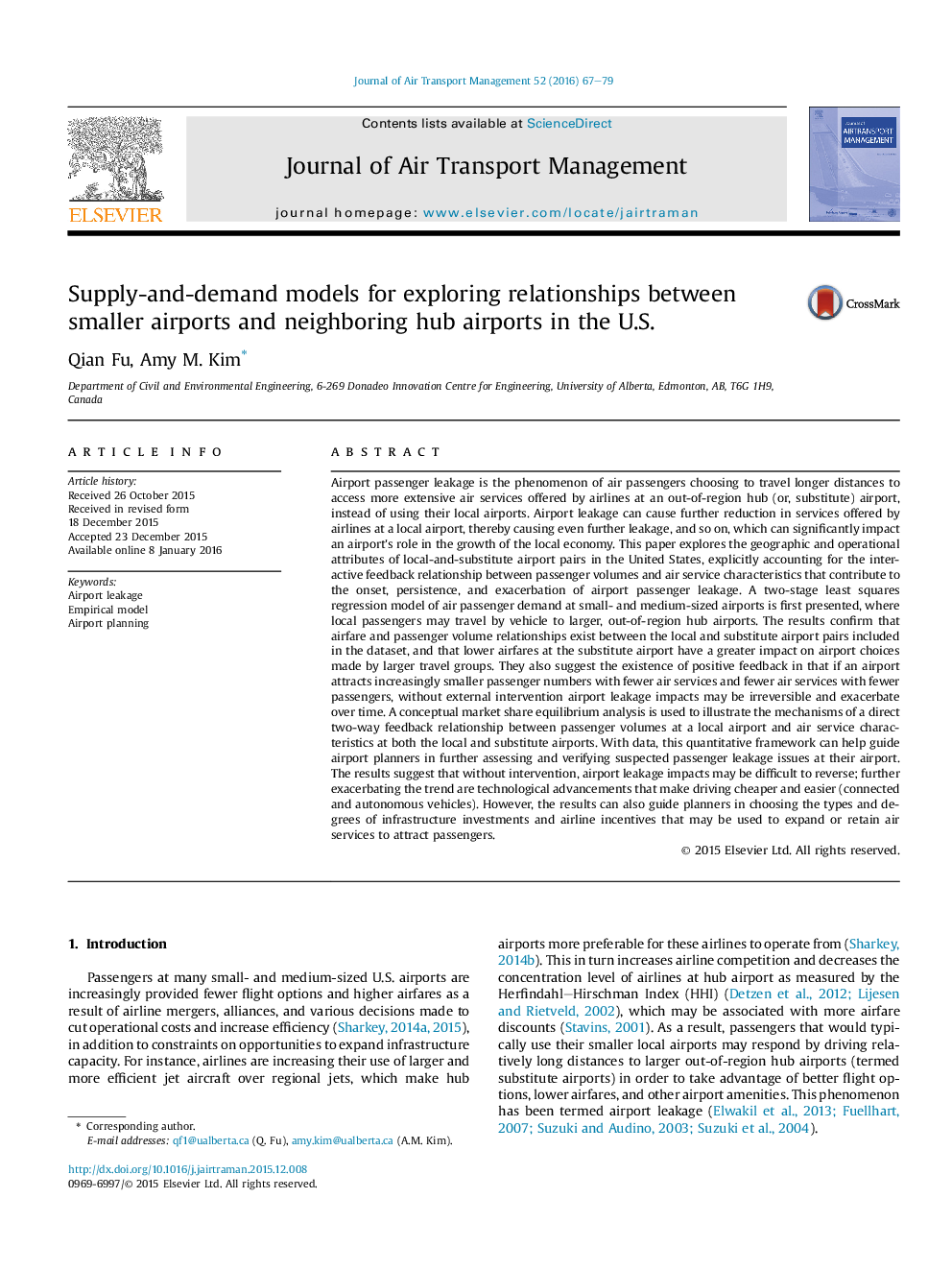| کد مقاله | کد نشریه | سال انتشار | مقاله انگلیسی | نسخه تمام متن |
|---|---|---|---|---|
| 1030703 | 1483566 | 2016 | 13 صفحه PDF | دانلود رایگان |
• We explore the issue of air passenger leakage at small and medium-size airports.
• We model relationships between passenger volume and air services at neighboring airports.
• We present a supply-and-demand feedback model of airport choice.
• The existence of feedback is demonstrated – more passengers, more attractive services.
Airport passenger leakage is the phenomenon of air passengers choosing to travel longer distances to access more extensive air services offered by airlines at an out-of-region hub (or, substitute) airport, instead of using their local airports. Airport leakage can cause further reduction in services offered by airlines at a local airport, thereby causing even further leakage, and so on, which can significantly impact an airport's role in the growth of the local economy. This paper explores the geographic and operational attributes of local-and-substitute airport pairs in the United States, explicitly accounting for the interactive feedback relationship between passenger volumes and air service characteristics that contribute to the onset, persistence, and exacerbation of airport passenger leakage. A two-stage least squares regression model of air passenger demand at small- and medium-sized airports is first presented, where local passengers may travel by vehicle to larger, out-of-region hub airports. The results confirm that airfare and passenger volume relationships exist between the local and substitute airport pairs included in the dataset, and that lower airfares at the substitute airport have a greater impact on airport choices made by larger travel groups. They also suggest the existence of positive feedback in that if an airport attracts increasingly smaller passenger numbers with fewer air services and fewer air services with fewer passengers, without external intervention airport leakage impacts may be irreversible and exacerbate over time. A conceptual market share equilibrium analysis is used to illustrate the mechanisms of a direct two-way feedback relationship between passenger volumes at a local airport and air service characteristics at both the local and substitute airports. With data, this quantitative framework can help guide airport planners in further assessing and verifying suspected passenger leakage issues at their airport. The results suggest that without intervention, airport leakage impacts may be difficult to reverse; further exacerbating the trend are technological advancements that make driving cheaper and easier (connected and autonomous vehicles). However, the results can also guide planners in choosing the types and degrees of infrastructure investments and airline incentives that may be used to expand or retain air services to attract passengers.
Journal: Journal of Air Transport Management - Volume 52, April 2016, Pages 67–79
